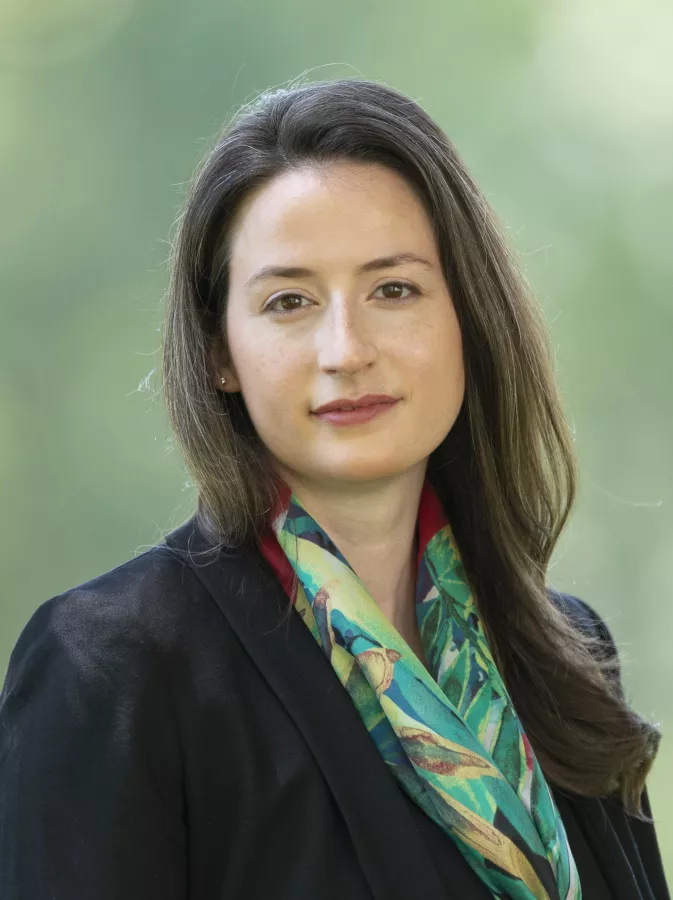Economist Jennifer Peck ’06 Examines How COVID-19 Will Affect Colleges and Universities this Fall

Jennifer Peck '06
How will COVID-19 affect colleges and universities this fall? That’s the question Assistant Professor of Economics Jennifer Peck ’06 set out to answer in a recent study inspired by campuses’ plans for reopening.
Co-authored with her husband, Philip Gressman, a mathematics professor at the University of Pennsylvania, “Simulating COVID-19 in a University Environment” [pdf] projects how the coronavirus could spread across campuses and the steps schools can take to minimize its impact. The working paper, which has been profiled by The Washington Post and Inside Higher Ed, is believed to be the only detailed epidemiological study focused exclusively on the virus at colleges and universities and has been shared with officials at the College and at Penn.
Basing their study on a campus the size of the University of Pennsylvania, with 20,000 students and 2,500 faculty members, Peck and Gressman found that a combination of simple interventions could limit infections to about 50 over 100 days, with only about 200 people quarantined at any given time.
Here, Peck discusses the paper and the strategies she and Gressman found most effective for campuses to keep the virus contained this fall.
How did the study come about?
Like most academics, my husband and I have been closely following the situation for the fall. We were really interested in whether it was even possible for universities to reopen, so we decided to build a model that pulls together all the information that’s already out there about coronavirus and combine it with what we know about how things work in a university. There’s a lot we don’t know, but there is also a lot that we do know: how quickly it spreads through a population when there are no mitigation measures; when people’s symptoms tend to come on; and so on.
Much had been shown in these broader epidemiological models, but nothing had been done using the particular structure of contacts that occur at a university. We were interested in pulling together all the epidemiology information but then combining it with what we knew about how students and faculty interact in a university setting.
What were the most important findings?
If nothing is put in place to mitigate risk, then the situation looks really grim: Class meetings alone are enough to give you an uncontrolled outbreak on campus. But we found that a package of mitigation measures can be very effective, things like quarantine and contact tracing, random testing, mask-wearing, and moving the largest classes online. In the model, we moved classes with more than 30 students to be online-only, and that actually makes the biggest difference by drastically reducing the number of contacts and the number of people infected.
Managing the spread through academic contacts also just isn’t enough if social contact or outside infection rates are high. The model assumes that students maintain a pretty low rate of social contact outside of the classroom, which is pretty optimistic. What we’ve shown, then, is that it is possible to stop academic contacts from causing an outbreak to run out of control. Managing social contacts is still a crucial problem not only for infections but also quarantine and missed classes. Increasing social contacts increases all of these quickly. Similarly, if the underlying rate of infection from off campus is really high, then the situation deteriorates rapidly.
Many campuses are planning to quarantine students who test positive, but we actually found that false-positives are high enough that this can lead to a crisis of over-quarantining. The false-positive rate that we see is something like 0.8%, which sounds small, but it’s not when you’re testing 20,000 people. It’s not an unmanageable problem — there are testing protocols where you can do retests of those positives to get those numbers down — but we are trying to put an alarm out there that this is something to pay attention to.
Why not just move all classes online instead of offering a hybrid environment?
We approached this seeing the public discourse around it, and there seemed to be many places that were committing to being in person in the fall. Obviously, the most reliable way to control outbreaks on campus is to just not have in-person instruction, but we were interested in finding the safest way to meet in person for universities that were committed to that model.
What surprised you about this study?
It surprised me how well these strategies all work all together. This is consistent with what we’ve observed in the larger spread of the disease, but if people are social distancing, mask-wearing, and not meeting in large groups, all these things together can keep the reproduction of the disease pretty low.
Should there be more studies focusing on colleges and universities right now?
People are worried that colleges are importantly different from daily life in another context. On the one hand, you have more control over how interactions are structured and what mitigation strategies are feasible. On the other, you also have dorms, you have classes, and all of these other aspects of it that I can imagine are quite concerning.



